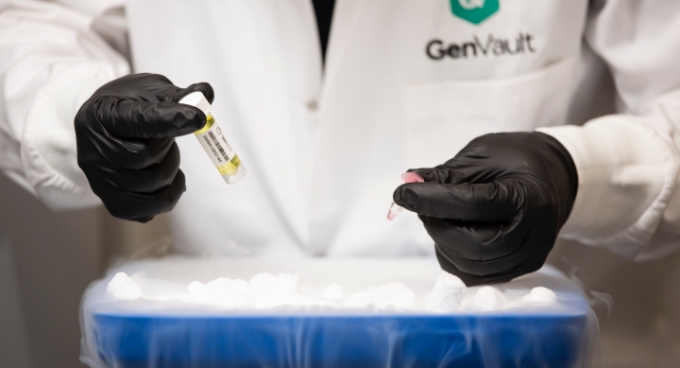Biosamples are only as good as their vial labels. Preventing label errors is just one way GenVault protects your invaluable biodata.
Biorepository labeling errors happen – and more often than many realize. By some estimates, patient specimen identification errors cause more than 160,000 adverse patient events in the United States each year. Clinical research and drug development can also be jeopardized by label failure.
“Without legible, compliant, or accurate sample identification, vials can be considered compromised and must be destroyed,” explains Emily Young, scientist and Executive Director at GenVault. “It points to the critical value of airtight labeling policies and practices.”
Then there are the ethical reasons to ensure foolproof labeling.
We have a moral responsibility to protect the samples in our care
GenVault Executive Director, Emily Young
“We have a moral responsibility to protect the samples in our care,” Young says. “Not doing so is disrespectful to the patients who have agreed to participate in trials, to animals who, in some cases, gave their lives for research, and to every person and organization entrusting us with their biological data.”
Speaking From Experience
Prior to creating GenVault, Emily Young worked for two decades as a manager in clinical and pre-clinical research, commercial, and production laboratories. Her experience includes biobanking and managing teams responsible for clinical trial sample management.
In 2019, she partnered with storage preservation expert Keith DiMarino to develop an industry-leading biorepository in the Philadelphia region. His 20+ years of storage experience and her cryostorage expertise combined to create state-of-the-art GenVault.
As GenVault’s Executive Director, Young oversees all storage facilities’ standards and practices. She insists on labeling guidelines that surpass those outlined by the International Society for Biological and Environmental repositories (ISBER).
Re-Labeling Vials: Genvault’s Superior Approach
Many of Young’s policies and practices are designed to ward off two of labeling’s greatest foes: Time and temperature. These include over-labeling, adding new data to handwritten labels on vials or at the box level, and accommodating the requirements of extreme conditions.
“Cryovials and boxes that have been in LN2 in particular need additional care in the relabeling process,” Young explains. “To maintain the -80°C temperature, materials have to be kept on dry ice. The frost the develops from sitting in the freezer must not be wiped away with a gloved hand, as the heat from that alone could cause unnecessary freeze-thaw. Specially designed labels with the right adhesive will adhere to frozen material to maintain that ultra-low temperature.”
Next-Level Quality Management System
Knowing a biorepository’s quality management system (QMS) has a strong bearing on outcomes, Young and the GenVault team also implemented a custom QMS that’s more complex and foolproof than any other biorepository QMS in the nation: the cloud-based Laboratory Information Management System (LIMS). LIMS’ identification and tracking features include custom field inputs that allow easy tracking of all client data and identifiers.
Schedule A Genvault Consultation
Worried that your most precious assets – your biosamples – could be lost or misidentified in a biorepository? GenVault’s purpose-built facility, practices, and team of industry leading experts is uniquely equipped to protect your biospecimen.
Reach out to [email protected] for a complimentary consultation.
